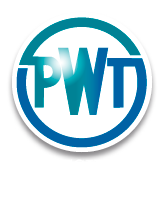The Gas Atmosphere Process
Unique one-dip galvanising

|
Shorter production lines and better quality steel
The traditional way of galvanising wire is too long and requires harmful chemicals and acids to prevent oxidisation. However, most countries – including China – are moving to ban acid based processes. The problem is that the current processes expose the steel to air. As a result, longer production lines for degreasing, pickling and fluxing are required to eliminate oxidisation (in order to ensure good quality steel). The Oxygen Free Process creates an inert atmosphere, so the steel is never exposed to air (eliminating oxidisation and the need for harmful chemicals). Click here to find out how PWT can design and supply a new or upgraded Gas Atmosphere Process for your business in the areas of:
Single Dip Galvanising } Single Dip Aluminium } Single Dip Galfan } |
Benefits
• Do away with fluxing because there is no oxidisation.
• Environmentally friendly.
• Shorter production lines are faster and cost effective.
• Produces better quality wire with high durability and resistance.
• Energy efficient.
How the Gas Atmosphere Process works
The PWT Gas Atmosphere Process is a totally different way of doing things. It requires a shorter production process that is faster, safer and environmentally friendly – while offering a superior quality finish.
During the PWT Gas Atmosphere Process, the wire is washed in Sodium Hydroxide (an alkaline compound) first, before being put through the hot dip furnaces, which are powered by a choice of electricity, natural gas or LPG.
After heating – which is required for durability and strength – the wire is directed towards one of three channels (on the same production line) for zinc, galfan or aluminium single dip treatment and wiping. Thereafter the process ends with quenching.
PWT will design and supply a new or upgraded production line using confidential technology, designed to act on the surface of the steel to clean and degrease the wire.
Heating and cooling is carried out in an inert, protective atmosphere. The Quantum™ – EMW™ unit is used to ensure a consistent coat after single dipping.
The Gas Atmosphere Process requires a much smaller operational area than the current production lines.
Galvanising Plant Process
- Pay-off section
- Cleaning and rinsing section
- Heat Treatment Furnace
- Galvanising System
- Take-up frame
The Payoff section
At the start of the process the wire pays off turntables and overhead Wapping arms or spool units, and on through guide rollers for entry into the cleaning and rinsing section.
Cleaning and Rinsing Section
All traces of wire drawing lubricant are removed from the wire prior to galvanising when the wire is passed through alkali cleaning and water rinse tanks.
The tanks are equipped with individual pumping systems and are easy to thread up. Air knives are provided on all tanks to minimise carryover from one tank to another – the final air wipe is also for drying the wires so that it enters the furnace in a clean, dry state.
Heat Treatment
PWT utilises a special design that allows the wire to be prepared for galvanising without the need for acid cleaning or fluxing.
Our process achieves this environmentally friendly outcome by heating the wire in a gas atmosphere, which begins at the down-tube and ends at the wire entry end – providing protection from oxidisation to the wire and an excellent medium for transferring heat into the wire for annealing and preparation of the wire for galvanising.
The Heat Treatment furnace itself is made up of a number of modules for several reasons:
- Ease of shipping, using general-purpose containers
- To facilitate your entry to the galvanising market on a minimum capital investment basis (with the ability to purchase more modules as sales increase)
- The ability to relocate the furnace simply and easily at any future time.
- Furnace modules are easy to maintain, ensuring long life at minimal cost
The number of zones of heating control depend on the number of modules required for a set production rate, the type of heating used (gas or electric), and the number of lines across the furnace.
The Zone control options can include:
- Digital controllers with fuzzy logic control, which communicate back to the furnace computer, with printer;
- Furnace software is fully developed to enable mimics generation, reports, trends, history etc;
- Management can check the furnace operation, ensuring the plant is operating as programmed, even outside normal hours of work.
The PWT Heat Treatment process is unique because it raises the temperature of the wire only once, and then reduces it to the galvanising temperature for perfect hot zinc bonding.
